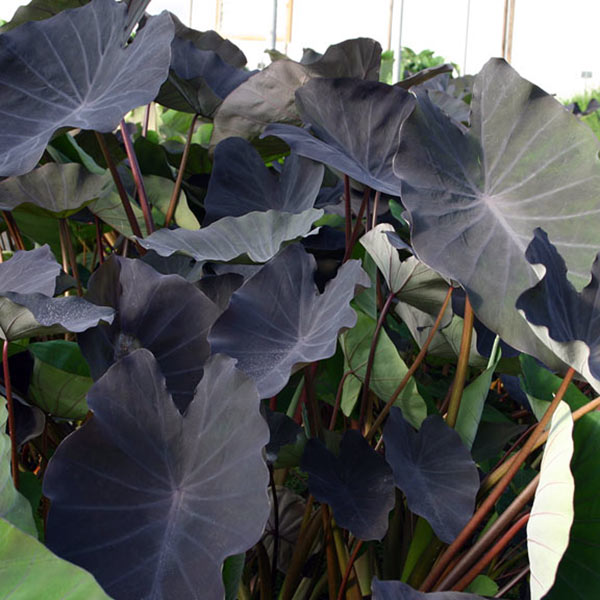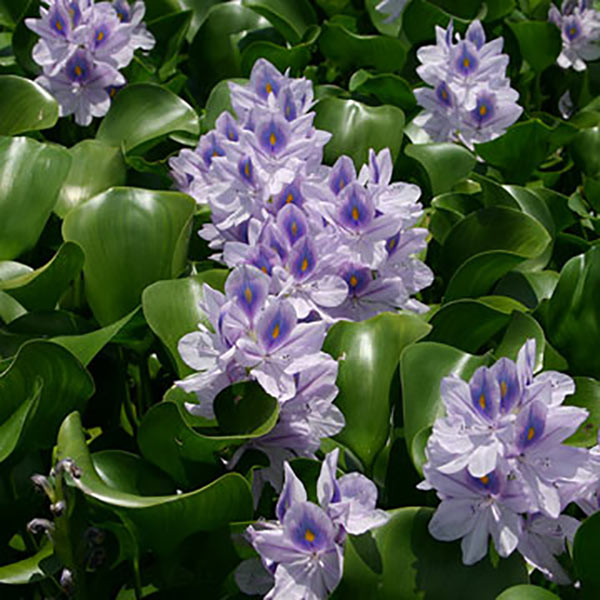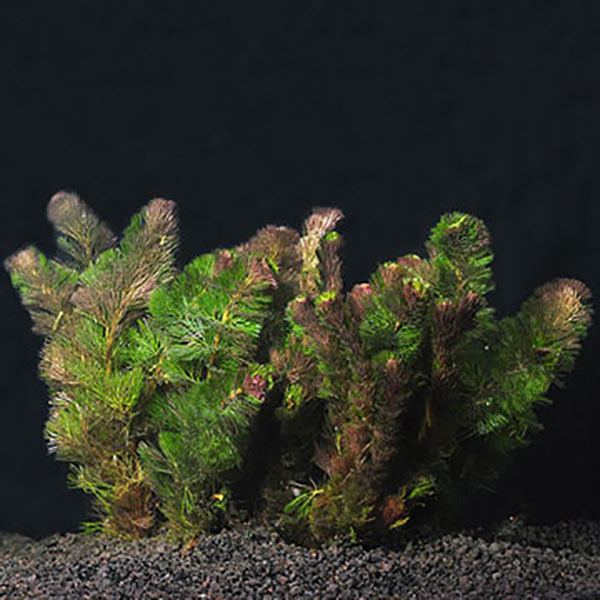| |
Untitled Document
Lush plantings of semiaquatic (marginal or bog plants) and aquatic pond plants effectively improve pond water quality by utilizing excess nutrients that would normally contribute to poor water quality. Adding aquatic plants to your pond or water garden is a simple process but keep in mind that different plants require different planting methods in order to thrive.
Though not a requirement of our acclimation procedures, LiveAquaria® highly recommends you quarantine all water garden plants in a separate container for a period of two weeks to reduce the potential introduction of snails into your water garden. Please visually inspect the leaves of the plants for snail eggs and remove any you find using your fingernails. Then, thoroughly rinse each plant in water. In addition, all dead leaves should be removed from the plant before being added into your pond or water garden.*
LiveAquaria® recommends planting the majority of plants in pots rather than directly in the bottom of the pond. Because the pots are retrievable, long-term plant maintenance will be easier.
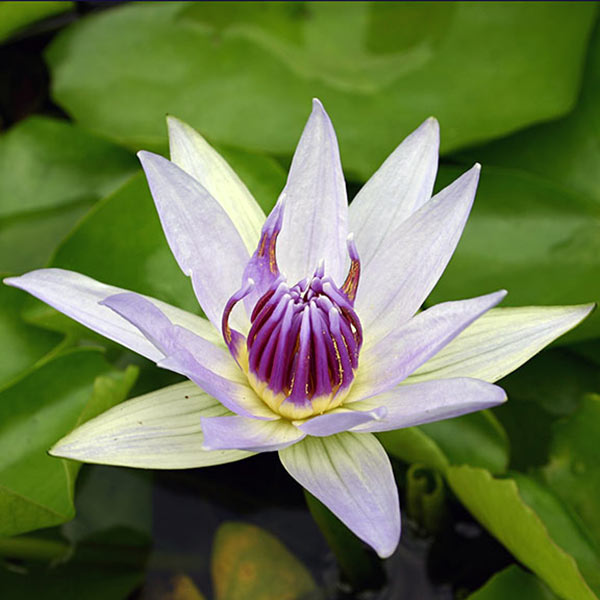
Hardy Water Lilies
Hardy water lilies may be planted in early spring when they are dormant (having little or no leaves or roots) or when in active growth with leaves and roots that have already sprouted. When already growing, they should be planted when water temperature is at least 65°F.
- Select a 3 to 5 gallon pot that is at least 12 inches in diameter for each water lily. Line the pot with moss, leaves, or black and white newspaper.
- Fill the pot about two-thirds full of aquatic planting media, making a mound at one side of the pot.
- Place the rhizome at a 45 degree angle on the mound so the crown is facing the middle of the pot. Spread out any roots so they are out from under the rhizome.
- Cover the rhizome and the roots with no more than one inch of planting media or it will be difficult for new leaves to sprout. Be sure to leave the crown of the rhizome uncovered.
- Add fertilizer tablets and then water the pot thoroughly. Add just enough pea gravel to cover the rhizome.
- Lower the plant to a depth of 6 inches. As the plant grows, it can be lowered to a final depth of 12 to 18 inches.
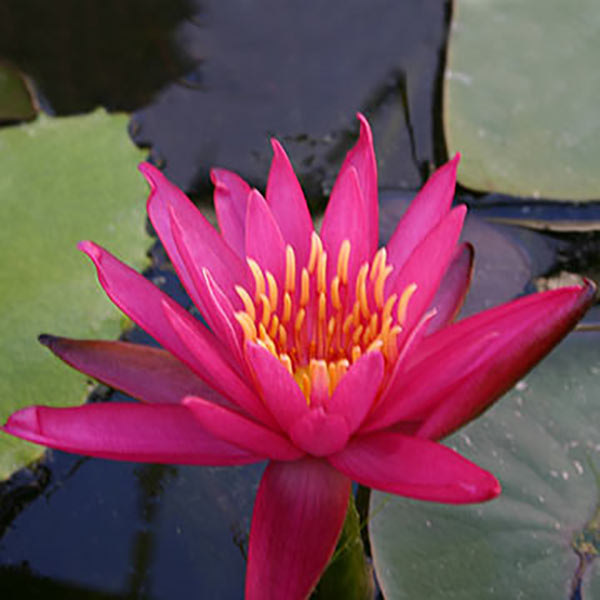
Tropical Water Lilies
Tropical water lilies cannot tolerate cold temperatures and should not be planted until the water temperature reaches at least 70°F. Planting too early can cause dormancy and restrict the potential growth of the plant.
- Use a 5 to 7 gallon container. Line the pot with moss, leaves, or black and white newspaper. Then fill the pot about two-thirds full of aquatic planting media, making a mound in the middle.
- Place the lily on top of the mound, spreading its roots out from underneath it.
- Cover roots with planting media, just below the point on the stems where they turn a darker color. Add fertilizer tablets. Then, add a thin layer of gravel to keep the planting media from escaping the pot.
- Because actively growing tropical lilies float easily when first planted, LiveAquaria® recommends either placing a smooth rock over the roots of the plant or tying string in a crisscross pattern across the crown of the plant to hold it down. The string or rocks can be removed from the pot after one to two weeks.
- Lower the plant to a depth of 6 inches. As the plant grows, it can be lowered to a final depth of 12 inches.
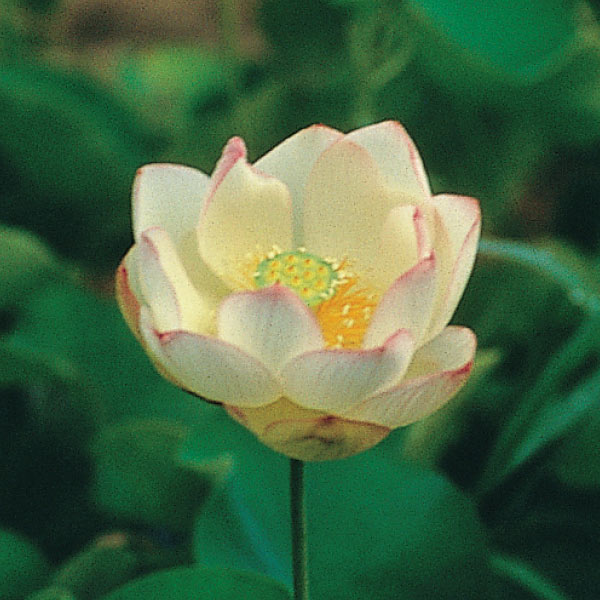
Lotus
An extra degree of care is necessary when planting these sensitive plants. Lotus tubers should be planted in early spring. If the tuber has sprouted new growth, take care not to break or bruise any growth tips as the tuber would be less likely to sprout and may even perish. Lotus need to be planted in a round pot because their tubers grow end to end and could become stunted if they encounter a corner in a square pot. The container should be 16 to 20 inches in diameter and 9 to 10 inches deep.
- If planting a bare-root tuber, float the tuber in pond water in a pot with no holes. The pot should be half filled with a clay substrate, and then topped with a few inches of water. Keep it in a sunny location and maintain the water temperature between 75°F and 86°F. Be sure to change the water every couple of days to prevent the tuber from rotting.
- When the tuber develops a few leaves, gently place it on the clay soil and hold it in place with a smooth, flat rock. It will develop roots that will anchor it into the soil. Maintain at least three inches of water above the tuber.
- The pot may be placed in the pond at this point, but great care should be taken to avoid submerging the leaves. If submerged, lotus leaves will perish. The pot may be placed at a greater depth in the pond once the lotus develops aerial leaves.
Bog Plants
Bog plants (also known as marginal plants) grow in a variety of ways, so be sure to take the natural growth habit of the specific plant being planted into consideration. There are some marginal plants that do better if they are not planted in pots, so it is important to research the specific planting preferences of each plant and proceed accordingly. Bog plants are grown in 2 inch net pots and it is recommended that you carefully remove these pots while trying to avoid any damage to the roots.
- Choose a 1 to 3 gallon planting container. Line the pot with a layer of sphagnum moss or black and white newspaper. Fill the pot with aquatic planting media until it is half full.
- Place the plant in the pot and fill the remaining space with aquatic planting media. Top with 1/2 inch of pea gravel to prevent the planting media from washing away.
- Lower the pot to a water depth of 2 to 3 inches above the layer of pea gravel, placing it near the edge of the pond.
Floating Plants
These plants require no planting. Simply place them in your pond or water garden once water temperature is consistently above 65°F. If you choose, you can also anchor them in rock crevices at the water’s edge or pot them like a bog plant to prevent them from floating into your filtration system.
Submerged Plants
These plants will grow best if planted in a wide and shallow pot and fertilized regularly. Submerged plants are usually planted in groups, but each stem should be planted in its own individual hole to prevent one rotting stem from contaminating the rest.
- Fill the pot with aquatic planting media. Water the planting media thoroughly, and then make holes in the surface about 1-1/2 to 2 inches deep.
- Remove the lead weight from the bundle of plants.
- For stemmed plants, strip off two to four leaves, exposing the nodes on the stem. This is done to prevent leaves from rotting under the substrate.
- Plant the prepared stemmed plants 2 to 4 nodes deep. New roots will grow from the buried stem nodes. Top off with gravel.
- For rooted plants, cut off one half to two thirds of the roots using a sharp pair of scissors. This will stimulate new growth.
- Completely submerge these plants to a depth of at least 12 inches.
*Learn More about why you should quarantine all new aquatic plants and what you can do to prevent the potential introduction of unwanted hitchhikers.
Acclimate New Fish, Corals, & Inverts
Plant Pond or Water Garden Plants
|



